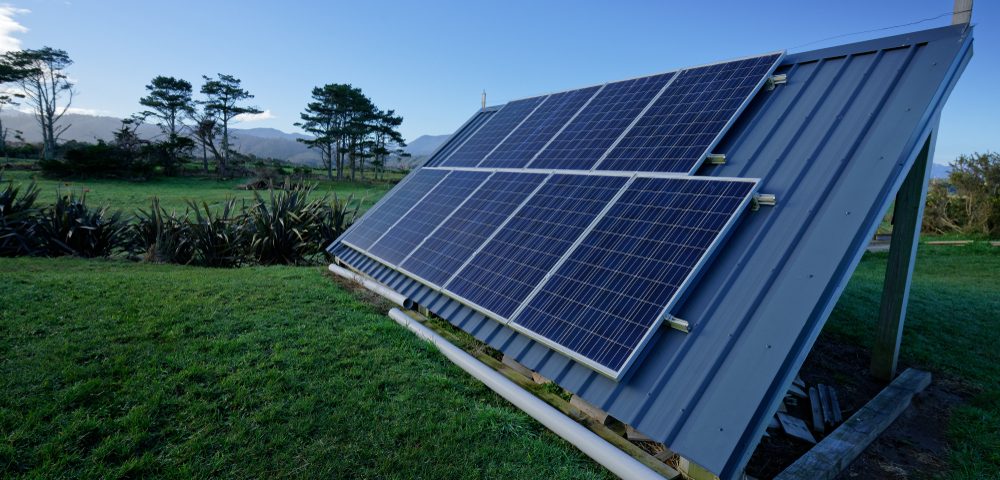
When you discover all the environmental and financial benefits of a solar power system, the appeal of an off-grid system is simply undeniable. You can power your home or business solely of electricity that technology can produce from just being in the sun!
Before you dive in, it’s also important that you understand how your sizing and capacity requirements for a solar system will be different from those on the grid.
Solar System Australia’s capable experts will assist you to understand what these requirements are in this guide. As well as how to make the best calculations to help you select a suitable system.
When it comes to sizing an off-grid solar power system, there are a few factors that you need to consider:
- Energy Load
- Average Sunlight
- Days of Autonomy
Average Energy Load
Take your monthly kilo watt per hour and divide it by 30 for an estimated rate the daily kWh your household uses. Multiple this number by 1000 and you will get the daily estimated energy use of your home in watts.
Another way to calculate this is by going through the appliances in your home, listing their watt requirements per hour and how many hours in a day you generally use them. You can find their watt requirements on the energy rating stickers that comes with most appliances. With other appliances like computers or hair styling tools, you can also find more information and assistance with this from their brand websites and technical specifications information online.
Peak Energy Load
You can nominate this amount as the highest peak on your energy bill, or by listing the number of watts your household would be using if you started using all the appliances in your house all at once.
Average Expected Sunlight
This measurement is expected as it will allow you to get a better idea of how sunny it is in your region. With a sunnier location you don’t have to worry as much about having a robust energy back up battery storage with many days of autonomy. Whereas, if your location is prone to receiving more overcast days then you may want to invest more in greater battery storage for more days of autonomy.
You can find the peak sunlight hours of your area by soliciting a sun chart. Look at the closest city you are near and take note of their average sunlight hours. You can also access other commonly expected weather conditions here, which you can bring up in a consultation with your solar installers to make sure you have the best products for your location.
Days of Autonomy: Calculating Your Solar Battery Requirements
From this information, you can work out how much of a capacity you should be aiming for when it comes to selecting the right battery storage.
Here you need to work out how many days of autonomy that you want to go for. If you live in a very sunny state, you may feel confident in less days of autonomy, while you may want to opt for more if you experience more overcast days. In any case, our experts recommend at least opting for 3-5 days to make up the possibility of two or more days with cloudy weather.
Sizing: Solar Battery Storage
Off-grid solar systems will rely on an apt capacity and integration of solar battery storage. It is important that you make the right decision when it comes to how much battery storage you install. You want a big enough capacity to provide back-up power for your house and all appliances at night and through days without as much sunny weather, while small enough that your solar panels are able to fill them up.
Supplementing with new solar batteries down the track is also not advisable. When new solar battery storage is added to an off grid solar system, the old battery storage will put a lot more wear and tear on the new battery, resulting in a shorter lifespan for the whole system.
What Precautions Should I Consider?
Temperature – Besides supplementing an old solar battery system with new batteries, another factor that can impact your system is temperature. The cold can freeze up battery liquid and stop it from working or operate a much lower performance. It is important to make a note of how low the temperature gets before you make a purchase. So, you can compare operating temperature ranges of solar batteries and be assured that the battery you go with is right for your location.
Roof – It is also necessary that your roof is long and wide enough to have the number of solar panels that are needed for installation. On top of the space required, your roof also needs the load bearing strength to ensure a proper support for your system and no damage to your home.
Back Up Generator – It pays to be prepared for any outages when you are living off the grid. Maybe there’s many days of dark overcast or you have unusual peak energy needs. In any case, a backup gas or diesel generator is ideal here to ensure that your household has energy coverage.
Need any more assistance?
Don’t hesitate from getting in touch. Our solar installers are providing FREE Solar Assessments to customers so that they can understand what system they would be suitable for, as well as all that they can get out of solar power. We are also able to do this remotely during the COVID-19 restrictions, for no hassle to you!
Call 1800 975 270 for a chat or send us an email on [email protected] and we’ll get back to you ASAP!
